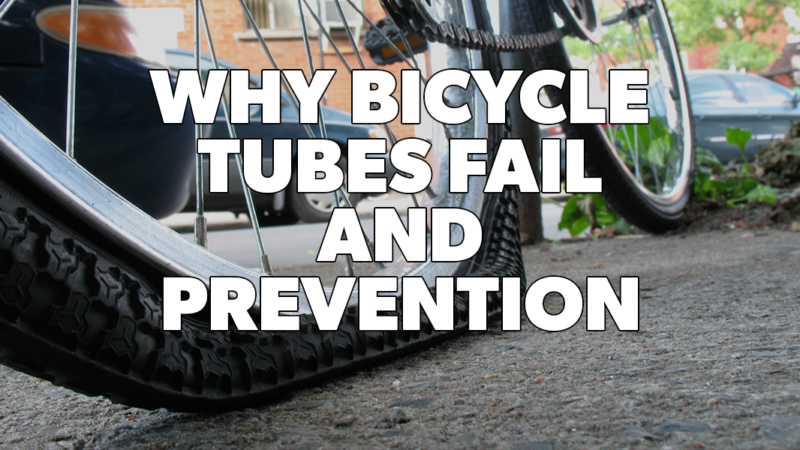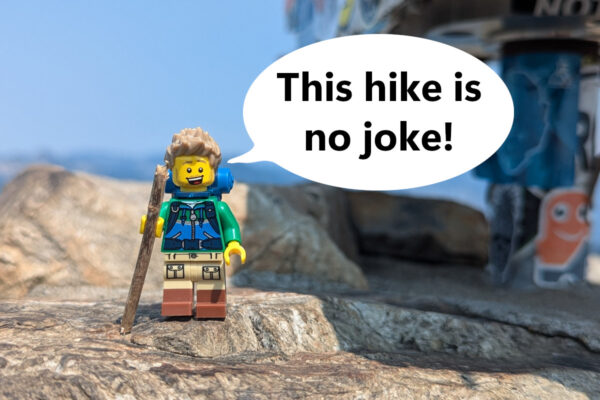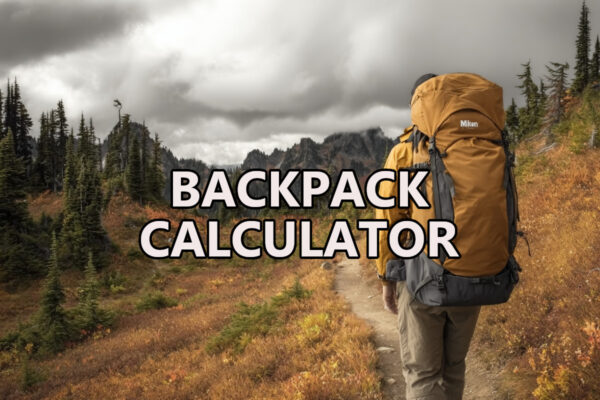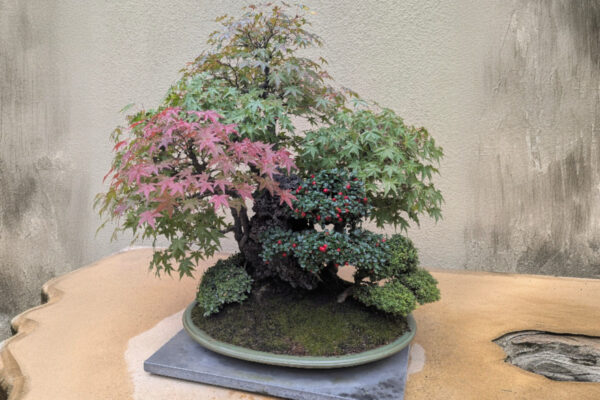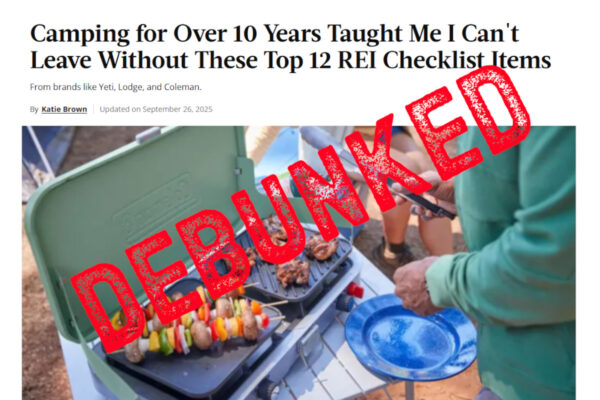Have you ever encountered mysteriously flat bicycle tires, even when the bike hasn’t been used in a while? While punctures are a common culprit, there are other surprising reasons for tube failure. This article will explore the causes of flat tires and strategies to keep your bike ready to ride.
How This Post Came About
I was cleaning out the gear, dusting things off and getting gear ready and realized my bike tires were pretty flat. So I put 60 pounds of air in them and promptly heard two pops. Not being a tire expert, I thought maybe it was the tire seating on the bead. Problem is that I looked at it about an hour later and the tires were completely flat, my bicycle tubes failed completely.
This is a newer bike that gets stored indoors and hasn’t been ridden much. So I was wondering what could make a bicycle tube fail like that. So I got to researching.
Common Reasons Tube Tires Fail
- Punctures by a sharp object
- Failure or damage to the valve stem
- Rubbed or ripped tire
- Over pumped tires (blowouts)
- Road hazards (potholes, debris)
- Inner Tube Pinching
- Slow leaks
- Pinch Flat (snake bite)
- Tire quality and/or wear
- Inner Tube quality and/or wear
- Damaged tire liner
- Sharp edges from the rim drilling (spoke holes)
Now my tires weren’t being used, so punctures, wear from use and the like. I had checked the pressure going in and had only put 65 pounds in so I knew I hadn’t over-inflated them. I haven’t pulled them apart yet, but I’m suspecting they got run while a little on low pressure and were low-quality factory tubes. The combination made for weak spots that gave up when I put them up to full pressure. After doing all this research, I thought I’d share it with you. There are some good suggestions on how to prevent or at least reduce the chances of having a flat bicycle tire.
Tire Tubes Lose Pressure Normally
While my tires failed catastrophically, it is normal for all bicycle tubes to lose air over time. When you put pressure in a bicycle tube, the molecules that are in the tire actually are being pushed out through the tube material. The higher the pressure and the thinner the walls of the tube, the faster that happens.
Cheap, thin tubes or fancy lightweight ones will lose pressure faster than a heavier tube with thick walls. The tradeoff is in rolling speed. You can save a few ounces on your tires by using a performance tube, but the tradeoff is that it will lose air naturally faster and be more prone to failure. If you are like me and not in it for speed, a puncture-resistant tire is the way to go. The heavier material will slow the escape of air from the tires.
Low Pressure Kills Bicycle Tubes
What most likely happened to me is what is referred to as a snake bite. When tires have too little pressure in them and hit an edge, the ire flattens and a little bit of the tube can get up between the rim and the tire. As the tire snaps back into place, it pinches the tube, typically making two small holes, hence the term “snake bite”.
The way to prevent this is to make sure that your tires are always properly aired up before riding. Bicycle tires all have different preferred pressures and you need to be aware of that and adjust for your body weight. Additionally, never trust the gauge on your pump. They can be radically inaccurate. So if you are already shopping for tire liners (down below), you may want to get an accurate gauge as well.
Do Bike Tubes Go Bad?
That my bike tubes had just gone bad was my first question when my tires blew out. The answer is that no, most bike tires will last nearly indefinitely provided they are installed correctly and don’t get severely punctured. This, of course, means that my tires likely went flat from my lack of experience in filling bike tires.
Additives to Keep Bike Tubes From Going Flat
One trick for helping to keep your tires from going flat is to use some sort of sealant in them. The debate as to what bike tire sealant is best rages. The common additives are Slime for bike tires, or Stan’s No-Tube sealant (both Amazon links) or some magic homebrew formula. The point of these is to seal any small holes you may get in your tire.
If you want to go the home-brew road, here is one bicycle tube sealant recipe that I found that should work for you.
Stan’s Sealant is simply a mix of propylene glycol, latex, and water., which Notubes sells for $25/quart. That’s some pricey liquid, and the reason people have experimented with different brews.
MTBR post by dwt
Propylene glycol is a non-toxic liquid with many uses, including antifreeze. You can buy a gallon of this antifreeze at Lowe’s for about $5.00, which is a mix of water and propylene glycol.
You can buy liquid latex for molds at Amazon for $25.00. This is highly concentrated and can be cut with the antifreeze at around 2:1. It also reeks of ammonia, which keeps it liquid,Bike and I have no clue as to the concentration. Anybody know?
Anyway, for $30.00 you get about 3/4 gal. of homebrew sealant (2 qt antifreeze + 1 qt. latex ) depending on how you dilute the latex. That’s, what, 40% less than the cost of Stan’s, which would be $75.00 for the same amount.
I reviewed a bunch of forums and the general consensus is that they all work well for thorns, and small nails, but won’t help with cuts or tears in your tubes. Which one is best is the big debate.
Use Rim Tape To Prevent Leaks
Bicycle tire rims have holes where the spokes to through them. If you don’t have rim tape or if it has failed, the tube, when inflated can actually push up into those a bit. Over time, rubbing on the edge of that hole can put a hole in your tire.
There are several manufacturers of specialized rim tape, but several people pointed out that going around the inside of your wheel twice with Clear Gorilla Tape (~$9 on Amazon) works just as well. While I haven’t tried it on my tires yet, I can tell you from experience that if put on right, Gorilla Tape holds amazingly well.
The key thing to do when putting on bicycle rim tape is to clean the inside of the rim well and wipe it down with isopropyl alcohol before putting on the tape. This will remove any stray oil and ensure a good bond. Then, once you have the tires back together, put ~30psi of air in them to really push it into place.
Like everything bike related, there is of course debate. Some people advocate using electrical tape, to which other people claim that the sharp edges, over time under pressure, will cut your tube.
Prevent Flat Bicycle Tires With Liners
If you ride somewhere that is hell on bicycle tubes like the desert with thorns or the city with glass and needles, and are sick of getting holes in your tubes, you may consider a tire liner. These put a barrier between your tube and the tire, so if something gets through the tire, it has less of a chance of puncturing your tube.
Bicycle tires are pretty tough, but if a piece of glass punctures it, even if it doesn’t initially pop your tube, it will eventually wear a hole in your tube and give you a flat. A tire liner acts like armor for the tire side of your tube. Check out this video where the guy had been driving with a chunk of glass in his bike tire without a flat.
If you are riding someplace that is mean to tires, I would definitely consider them. If you look on Amazon, there are lots of choices. He was using the Mr. Tuffy liner, but there are lots of options.
Leaving Your Bike In Your Car Won’t Make Your Tires Go Flat
This was a common question that I came across while trying to find out why my tires immediately went flat. The argument is that tires under pressure, when left in a hot car will expand, blowing them out. Again there is a good bit of debate on this. But I think I side with the people that say that barring unusual circumstances, the heat in a car won’t make a tire go flat. Here is a great explanation someone made in a forum in response to someone saying that the heat in the car blew their bike tire.
Using the Ideal Gas Law PV=nRT and solving for pressure: P=nRT/V. Since n, R, and V are constant, if we increase T by some factor, the pressure increases by that same factor. (ok, the volume may increase a bit as the tire heats up, but not a lot)
Post by Johnny
So if the tire starts at 60 degrees F (288K) and it increases in temperature to 120F (322K), that’s a factor of 322/288=1.12.
So if the starting pressure is 70PSI, it will end up at 78PSI. Which shouldn’t be enough to make it blow out since there’s a margin of safety in the tire pressure ratings. Even if the sun was beating down on the tire directly and raised it to 180F, that’d still only lead to a 23% rise in pressure, and I’d hope that there’s a much better margin of error than 23% in tire pressure ratings. I used to ride with a biking friend that switched from 23mm tires with a high 160psi pressure rating to 25mm tires with a 90psi rating, and he didn’t notice the difference and he spent months filling it to 160psi until someone pointed it out to him.
This is pretty close to the rule of thumb of 1 psi of pressure rise for every 10 degrees in temperature rise, which would predict that the 60 degree rise in temperature would lead to a final pressure of 76psi.
Also, tubes don’t hold in pressure, tires and rims do, and the original poster said that his tube was split, not that the tire blew or the rim failed. I suspect that it’s a bad tube that failed during use, poor installation that damaged the tube and eventually fail, or maybe no (or bad) rim tape that led to the tube being damaged.
In short, the extra pressure from your tires being hot isn’t likely to make your bicycle tubes fail. I’m sure there are extreme cases but the extra pressure won’t be an issue.
Funny Answers To Why Bike Tires Go Flat
Before wrapping up this article, I had to include the following humorous page on why bike tires go flat. This was originally posted on the now-defunct page kenkifer.com. Ken had a great site going until his tragic death at the hands of a drunk driver. I’ve included this because it would be a shame to let such a great piece of bicycling humor vanish into the mists of Internet history.
This challenge racked us in wreck.bikes.mischievous. We did our very best to solve the following problem, but we could not come to an agreement. However, we feel that one of these solutions must be correct!
Keren Hamel asked: Has anyone ever noticed that if you ride every day, your tires deflate slower than if you leave the bike alone for weeks without riding? I can go for weeks riding every day, without pumping the tires, and the minute I don’t ride for a week, the tires are totally flat. Why is this?
Mike Miller said: As you ride along, the air caught between the tire and the ground is pushed into the tire, replacing the air that has leaked out.
Mark Woodhead said: I think (egad! an opinion!) that the white powder in the tubes works to clog the pores of the rubber. When you ride, that powder is constantly being spread around to fill those pores. When your bike sits idly by, waiting for you to give it some attention, the powder settles down and the air begins to slowly leak out.Ken Kifer said: This is a great thread!
However, I think everyone else is completely wrong!
The real reason is this: The tires are really enthusiastic about riding!
As long as you keep riding, they stay pumped up!
But when you go without riding for a week, they become really deflated!
Jack Dingler said: Come on guys! Tell him the real reason! Years ago, a few tube manufacturers, under pressure to reduce the weight of their inner tubes began looking for ways to make a lighter tube. First they did a little market use analysis and determined that the worst time for a tube to lose air is when it’s being used. As a tube is being spun while in use, they realized that due to the laws of centripetal acceleration, the air presents the greatest pressure on the outer wall of the tube. This lead to the obvious answer, they could shave the thickness of the inner wall!
By doing this, they’ve created tubes that are lighter, and yet, just as effective at holding air while being used. When the tube is not spinning, it of course, loses air at a faster rate, as the air is no longer constrained by centripetal forces, and presents more pressure to the inner wall (the thinner one).
For racers, this was no big deal. They fastidiously check their tire pressure before every ride anyway.
Under pressure from racer wannabes, the tube manufacturers eventually had to make all of their tubes to match the higher performance racing tubes and so through market forces now sell the multi-thickness tubes exclusively.Jim Chinnis said: You are probably failing to park your bike with the valves up. If the bike sits around idle, the air eventually stops moving and ends up in the bottom of the tire. If you park with the valve stems near the bottom, the valves may not be able to handle the additional air and will leak.Performance has a vibrator you can attach to each wheel that will keep the air molecules moving, thus avoiding the problem. The Ti versions are $149 apiece. CroMo versions are a lot cheaper and give a sweeter shake.
David Casseres said: If you ride fast, it’s relativistic time dilation at work.
Ken Kifer said: I think this has to do with the uncertainty principle and Schroeder’s cat (or was it Charlie Brown’s dog?). If no one is watching the tires, they have a 50-50% chance of being flat, so one day they’re flat, and the next day they’re full of air. But as long as you’re watching them, they have to behave normally. The solution is to keep the bike in the living room, so the tires will have to behave. Another solution is to put the bike in the closet when the tires are flat and not take it out until you find them full of air.
Hobbel N. Kramp said: What’s this? Humor? We here in wreck.bikes.technogeek do not engage in humor. We are serious. Please do not waste our time with such rubbish. You must all be buffoons.All attempts at humor will be studiously avoided. A serious response to each of the above responses will be prepared, debunking the myths and urban legends in each. Now, go away.
Besides, as any true technical expert will tell you, or if you will just obtain Fred Fryburger’s Fatuous Fysics Formulas, or the Physics for Pinheads encyclopedia published by Pedantry Press, the increased centripetal force of air molecules against the inside surface of the tube creates an osmotic hysteresis effect which closes the pores in latex and butyl compounds. Anyone who says it is the talcum powder is a black liar!
And the relativistic time dilation theory has been disproved by the detailed measurements of Raymond Diehard. Read the FAQ!!!!
Bob von Moss said: Maybe it’s because when you ride, it heats up the tube (due to pressure the rider exerts down and the resistance of the tire on the road), which may cause the rubber material to expand a little bit like a piece of dough rising. If the bike remains cold for many days, the tube material may shrink and permit some of the pressurized air in the tube to escape.Mike J1 said: But then how do we rationalize the mysterious “High pressure leak” that only occurs under high-inflation, and disappears when you inflate the tube at a lower pressure and check for holes in a tub of water?These leaks would seem more likely to occur when riding than when not. Can’t the tubes get their act together and be more consistent in their behavior?
Jay Wenner said: The answers given thus far certainly lack any scientific basis, and are typical of people with limited scientific background. The air escapes from the tires at equal rates regardless of if the bike is ridden or not as shown in the partial derivatives below:[15 pages of ASCII impossible to read equations omitted. They’ve been omitted because some nerd will actually go through the equations and find some simple fact that ruins the whole theory.]
After re-taking introductory psychology twice, I can safely say that this whole dilemma can be simply solved with Freudian theory. You see the bike ride represents sex, and pumping up the bike tires represents really outstanding sex. If you ride every day, there’s no problem. If you take a couple weeks off, you need to pump up your tires.
Verne A. Aebli said: Actually, all of you that responded so far have made an obvious but incorrect assumption: that tubes are filled with only air.Anyone who’s purchased a new tube fresh out of the box is familiar with that wonderful “new tube smell”. New tubes emit this smell profusely. If you assume that both the inner and outer surfaces of the tube emit (outgas) equal amounts of new tube smell, there must be a lot of this aroma confined within the tube. (Since everybody knows that smells don’t penetrate rubber.) The heat generated by the friction of riding excites the rubber molecules to further outgassing, filling the tube even more. The more you ride the more new tube smell is released into the tube. Those of us that spend 24hrs/day on our bikes know for a fact that air does not needed to be added to tires, though occasionally you do have to bleed off a little of the odor or risk rupture. This is especially important prior to transporting your bike by air.
As further evidence of this theory I submit that it is common knowledge that new tubes hold “air” better and longer than old tubes. This is due to their higher aromatic potential.Tim Chambers said: The reason this is especially important for air travel is that the prospect of a holiday/tour/meeting new bikes causes further excitement of the rubber, thus producing more of the aroma. This can lead to blowouts.
Ed Chait said: Good guess but no aromatic cigar.The reason that frequently ridden tubes hold air better is because the molecules of air inside the tube are pushed around in a high pressure environment. This produces an increased physical robustness that prevents them from escaping through the rubber pores as easily as their wimpy less exercised brethren.
Jim Balter said: I explained to Keren that her cat was sucking the air out of her tires (that’s what happens to mine), but she claims not to have a cat. Perhaps it’s dust mites, then.
David Martin said: Oxygen deficiency and pollution.As the oxygen is depleted and heavy molecules such as carbon dioxide and ozone (and metal residues from combustion byproducts) become more abundant in the atmosphere, the air in the tyres becomes relatively light by comparison and so rises to the top of the wheel leaving a flat spot at the bottom where the ‘heavy’ gasses outside have pushed it in.
Originally posted on kenkifer.com
When you then stop and pump it up by the roadside you are pumping in ‘heavy’ gasses that will fill the flat spot at the bottom.
It should of course be noted that when tyres go flat they are more susceptible to damage from bits of glass etc. so these will rapidly find their way into the tyre before you stop.
And so the great search for truth goes on, with the most astute minds straining their abilities to establish beyond doubt the power of science and intellect in our lives! Thanks for all the great contributions! This is an epic work that shall exist when the pyramids are dust!
Conclusion On Why Bicycle Tubes Fail
The simple fact is that bike tires by their nature lose air over time. You can slow that down with additives and thicker tubes, but it will happen. The next big cause of tube failure is owner error. Not keeping them inflated, or installing them incorrectly will lead to a hole in a tube and a flat tire. last tire killer is things you run over. Thorns, nails, and glass can all puncture bicycle tubes.
There are lots of remedies for road hazards, but bear in mind that the more resistant you make your tires to puncture, the more they weigh. This may or may not be a big deal to you, but for some it is critical.
As for me, I’ll be putting in new tubes, checking my wheel tape and buying some tire liners.
Cover Photo Credit: Simon Law

